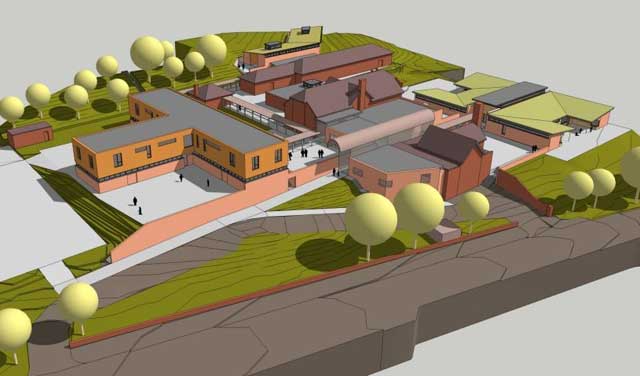£8m Nottingham redesign will create an environment where autistic pupils feel safe

Your support helps us to tell the story
From reproductive rights to climate change to Big Tech, The Independent is on the ground when the story is developing. Whether it's investigating the financials of Elon Musk's pro-Trump PAC or producing our latest documentary, 'The A Word', which shines a light on the American women fighting for reproductive rights, we know how important it is to parse out the facts from the messaging.
At such a critical moment in US history, we need reporters on the ground. Your donation allows us to keep sending journalists to speak to both sides of the story.
The Independent is trusted by Americans across the entire political spectrum. And unlike many other quality news outlets, we choose not to lock Americans out of our reporting and analysis with paywalls. We believe quality journalism should be available to everyone, paid for by those who can afford it.
Your support makes all the difference.While you might find a dripping tap mildly irritating, to an autistic child the noise could be excruciating – as could other school sounds such as classroom and playground hubbub. Some children on the autistic spectrum, however, crave noise and can't tolerate silence.
So meeting every autistic child's educational needs is tough. Rosehill, a special needs school in Nottingham, one of few schools catering solely for autistic spectrum disorder in the country, is conquering the complex challenges of educating pupils aged five to 19 with a groundbreaking design. As part of a government Building Schools for the Future programme, it is about to embark upon a radical £8m overhaul of its buildings. "It's about designing an ordered environment where pupils feel safe," says deputy head teacher, Andy Sloan, "and finding ways of coping with autism. You can't cure it, but you can learn to live with it."
Built in 1931, Rosehill sits on a wooded hill overlooking Nottingham. However, much of the original open-air feel was lost as the buildings and grounds were developed to cater for its 90 students. Consequently, the outdoor space is currently underused but, once the project is completed – which will involve 70 per cent of the site being rebuilt and the rest refurbished – pupils will once again enjoy dedicated outdoor play areas, with each adapted for their specific needs.
"It's all to do with calming the children and creating a sense oforder and well-being – a legible building," says Robert Evans of EvansVettori, architects behind the design who worked alongside main contractor Carillion on the project. Designers collaborated with acoustic consultants at Capita Symonds to create a segmented but united building.
Based around three groupings or "clusters", each class group has a range of rooms suitable for activities or quiet solitary moments, and a state-of-the-art sensory room. Every cluster has a "heart" space where pupils meet, eat and do group activities. This design, mirrored on each level, focuses on socialising the children without making them feel uncomfortable.
"Autistic children aren't naturally gregarious, and find bigger groups difficult," says Sloan, who has been closely involved in the design. Every class base has its own outdoor area, part-sheltered – and younger children have indoor play rooms too. Rooms have been built to overlook the Nottingham skyline, which teachers say has a calming effect.
A central area includes a sculpture garden, splash pool, soft play room and musical courtyard, plus rooms for meetings with parents and therapists – the school provides advice and guidance for families coping with their autistic children.
"We've created a hierarchy of space," says Evans. "A child who's unhappy can go to a very small room with good sound insulation to calm down, and then might move to a room with more pupils – or even to the heart space that unites different class areas. They can retreat again at any time. Any child will have the opportunity to be on his or her own."
All sensory impact is tightly controlled. "Children with autism might be hypersensitive to all senses," says Sloan. Acoustic experts have designed group rooms to enhance clarity of speech, while the smaller rooms are soundproofed. "There'll be times when children need either to retreat into a quiet safe space, but also a need for a space where they can vent their frustrations, scream and shout without distressing their peers," says Susan Witterick, principal acoustic consultant at Capita Symonds.
While acoustics are tightly controlled for the younger years, as the pupils progress the control loosens until those about to leave can experience noise levels similar to mainstream schools and offices. Likewise, older children will encounter lifts and stairs, while their rooms have a more office-like feel. "The aim is not to overprotect pupils but to get them gently used to conditions in outside environments," Witterick explains.
In the immersive sensory rooms, pupils can control pictures, colours and sounds. "It helps them understand concepts that they might not be able to imagine as easily as other pupils," says Sloan.
The building doesn't shun group activities. Technology – from interactive whiteboards and desks to wireless connectivity – will help to link the school.
Join our commenting forum
Join thought-provoking conversations, follow other Independent readers and see their replies
Comments